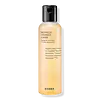What's inside
What's inside
 Key Ingredients
Key Ingredients

 Benefits
Benefits

 Concerns
Concerns

No concerns
 Ingredients Side-by-side
Ingredients Side-by-side

Propolis Extract
Skin ConditioningHoney Extract
HumectantButylene Glycol
Humectant1,2-Hexanediol
Skin ConditioningGlycerin
HumectantBetaine
HumectantCassia Obtusifolia Seed Extract
Skin ConditioningPanthenol
Skin ConditioningPolyglyceryl-10 Laurate
Skin ConditioningPolyglyceryl-10 Myristate
Skin ConditioningEthylhexylglycerin
Skin ConditioningSodium Hyaluronate
HumectantHydroxyethyl Acrylate/Sodium Acryloyldimethyl Taurate Copolymer
Emulsion StabilisingCaprylic/Capric Triglyceride
MaskingPropolis Extract, Honey Extract, Butylene Glycol, 1,2-Hexanediol, Glycerin, Betaine, Cassia Obtusifolia Seed Extract, Panthenol, Polyglyceryl-10 Laurate, Polyglyceryl-10 Myristate, Ethylhexylglycerin, Sodium Hyaluronate, Hydroxyethyl Acrylate/Sodium Acryloyldimethyl Taurate Copolymer, Caprylic/Capric Triglyceride
Water
Skin ConditioningPropolis Extract
Skin ConditioningRoyal Jelly Extract
Skin ConditioningHoney Extract
HumectantPropanediol
SolventTriethylhexanoin
MaskingDipropylene Glycol
HumectantCaprylic/Capric Triglyceride
MaskingHydrogenated Poly(C6-14 Olefin)
EmollientGlyceryl Stearate
EmollientDiphenylsiloxy Phenyl Trimethicone
Skin ConditioningPolyglyceryl-6 Stearate
EmollientCarbomer
Emulsion StabilisingButylene Glycol
HumectantPhenyl Trimethicone
Skin ConditioningCetearyl Alcohol
EmollientGlycerin
HumectantPolyglyceryl-6 Behenate
Emulsion StabilisingCitrus Tangerina Peel Oil
MaskingLactobacillus Ferment
Skin ConditioningSaccharomyces Ferment
Skin ConditioningCitrus Aurantium Bergamia Fruit Oil
MaskingCellulose Gum
Emulsion StabilisingPelargonium Graveolens Flower Oil
MaskingBoswellia Carterii Oil
MaskingAlcohol Denat.
AntimicrobialLavandula Angustifolia Oil
MaskingHydrogenated Lecithin
EmulsifyingCeramide NP
Skin ConditioningArginine
MaskingCitrus Limon Peel Oil
MaskingRosmarinus Officinalis Leaf Oil
MaskingEucalyptus Globulus Leaf Oil
PerfumingCananga Odorata Flower Oil
MaskingCinnamomum Zeylanicum Bark Oil
MaskingDisodium EDTA
Cholesterol
EmollientOleic Acid
Emollient1,2-Hexanediol
Skin ConditioningEthylhexylglycerin
Skin ConditioningWater, Propolis Extract, Royal Jelly Extract, Honey Extract, Propanediol, Triethylhexanoin, Dipropylene Glycol, Caprylic/Capric Triglyceride, Hydrogenated Poly(C6-14 Olefin), Glyceryl Stearate, Diphenylsiloxy Phenyl Trimethicone, Polyglyceryl-6 Stearate, Carbomer, Butylene Glycol, Phenyl Trimethicone, Cetearyl Alcohol, Glycerin, Polyglyceryl-6 Behenate, Citrus Tangerina Peel Oil, Lactobacillus Ferment, Saccharomyces Ferment, Citrus Aurantium Bergamia Fruit Oil, Cellulose Gum, Pelargonium Graveolens Flower Oil, Boswellia Carterii Oil, Alcohol Denat., Lavandula Angustifolia Oil, Hydrogenated Lecithin, Ceramide NP, Arginine, Citrus Limon Peel Oil, Rosmarinus Officinalis Leaf Oil, Eucalyptus Globulus Leaf Oil, Cananga Odorata Flower Oil, Cinnamomum Zeylanicum Bark Oil, Disodium EDTA, Cholesterol, Oleic Acid, 1,2-Hexanediol, Ethylhexylglycerin
 Reviews
Reviews

Ingredients Explained
These ingredients are found in both products.
Ingredients higher up in an ingredient list are typically present in a larger amount.
1,2-Hexanediol is a synthetic liquid and another multi-functional powerhouse.
It is a:
- Humectant, drawing moisture into the skin
- Emollient, helping to soften skin
- Solvent, dispersing and stabilizing formulas
- Preservative booster, enhancing the antimicrobial activity of other preservatives
Butylene Glycol (or BG) is used within cosmetic products for a few different reasons:
Overall, Butylene Glycol is a safe and well-rounded ingredient that works well with other ingredients.
Though this ingredient works well with most skin types, some people with sensitive skin may experience a reaction such as allergic rashes, closed comedones, or itchiness.
Learn more about Butylene GlycolThis ingredient is an emollient, solvent, and texture enhancer. It is considered a skin-softener by helping the skin prevent moisture loss.
It helps thicken a product's formula and makes it easier to spread by dissolving clumping compounds.
Caprylic Triglyceride is made by combining glycerin with coconut oil, forming a clear liquid.
While there is an assumption Caprylic Triglyceride can clog pores due to it being derived from coconut oil, there is no research supporting this.
Learn more about Caprylic/Capric TriglycerideEthylhexylglycerin (we can't pronounce this either) is commonly used as a preservative and skin softener. It is derived from glyceryl.
You might see Ethylhexylglycerin often paired with other preservatives such as phenoxyethanol. Ethylhexylglycerin has been found to increase the effectiveness of these other preservatives.
Glycerin is already naturally found in your skin. It helps moisturize and protect your skin.
A study from 2016 found glycerin to be more effective as a humectant than AHAs and hyaluronic acid.
As a humectant, it helps the skin stay hydrated by pulling moisture to your skin. The low molecular weight of glycerin allows it to pull moisture into the deeper layers of your skin.
Hydrated skin improves your skin barrier; Your skin barrier helps protect against irritants and bacteria.
Glycerin has also been found to have antimicrobial and antiviral properties. Due to these properties, glycerin is often used in wound and burn treatments.
In cosmetics, glycerin is usually derived from plants such as soybean or palm. However, it can also be sourced from animals, such as tallow or animal fat.
This ingredient is organic, colorless, odorless, and non-toxic.
Glycerin is the name for this ingredient in American English. British English uses Glycerol/Glycerine.
Learn more about GlycerinThis ingredient comes from honey made by bees. It is hydrating, antibacterial, anti-aging, and skin soothing.
Honey also contains amino acids, peptides, Vitamins A, C, and E.
The humectant property of honey draws moisture from the air to your skin. This makes it great at helping to hydrate the skin.
Honey may help reduce the signs of aging due to its antioxidant properties. Fun fact: darker honey has more antioxidants than light honey. The antibacterial property of honey may make it effective at helping to treat acne by killing acne-causing bacteria.
Many people wonder if honey extract is vegan. It is technically a byproduct from bees. This is because honey is created from the digestive enzymes in a bee's stomach.
Remember to be kind to bees :) They are important for many ecosystems and are endangered.
Learn more about Honey ExtractPropolis Extract is also known as bee glue.
This ingredient has antimicrobial, anti-inflammatory, wound healing, and antioxidant properties.
Studies show propolis helps fight against bacteria, viruses, and fungi. This may help with reducing acne and accelerate wound healing.
The flavonoids found in propolis extract are potent antioxidants. Antioxidants may help with reducing the signs of aging.
A study from 2020 found propolis to help reverse skin damage from UV.
Fun facts: This ingredient is created by mixing beeswax, bee saliva, and parts of trees. Bees use propolis as a sealant to close any gaps in their hives.
Since it is an animal-derived product, this ingredient is not considered vegan. For vegan alternatives, check out Galactomyces Ferment Filtrate or Centella Asiatica Extract.
Learn more about Propolis Extract